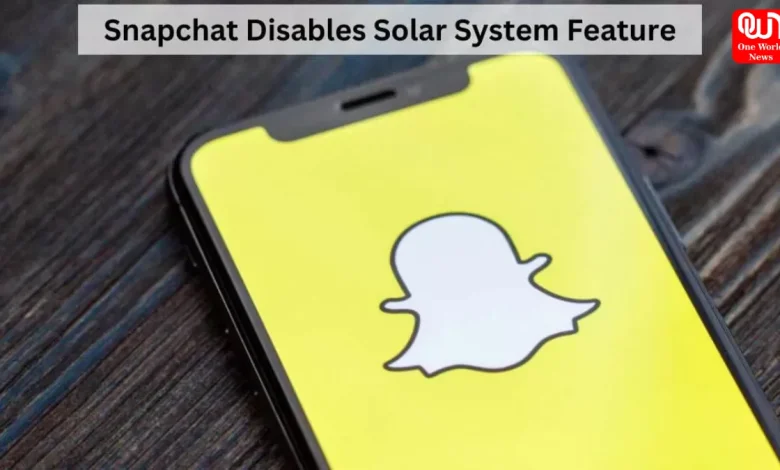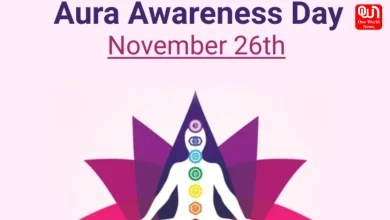Snapchat’s Solar System Feature: Know What It Is and Why the Company Is Disabling This Feature

Snapchat’s Solar System Feature Explained: What It Is, How It Works, and Why Snapchat Is Disabling This Feature
Snapchat’s Solar System Feature, also known as the “Friend Solar System,” quickly caught users’ attention for its creative approach to visualizing friendships. Introduced as part of the Snapchat+ subscription, this feature allowed users to see where they stood in their friends’ “orbit.” However, Snapchat is now disabling or making the feature optional, following feedback that it may have affected users’ emotions and relationships.
What the Solar System Feature Is
How the Solar System Feature Works
The Solar System Feature is available only to Snapchat+ subscribers. In this model, you are represented as the “Sun,” while your closest friends appear as planets orbiting around you. Each planet symbolizes a friend’s rank based on how frequently you interact with them. For instance, your top friend appears as Mercury, the next as Venus, and so on, all the way to Neptune for your eighth closest friend.
Readmore: Hailey Bieber Birthday 2025: A Glamorous Celebration of Style, Love, and Success
When you visit a friend’s profile, you can tap their “Best Friends” badge to see which planet you are in their Solar System. It’s a fun, visual way to measure closeness and engagement with friends.
The Meaning Behind Each Planet
The Solar System Feature uses planets to represent levels of friendship:
-
Mercury – Closest friend
-
Venus – Second closest friend
-
Earth – Third friend
-
Mars – Fourth friend
-
Jupiter – Fifth friend
-
Saturn – Sixth friend
-
Uranus – Seventh friend
-
Neptune – Eighth friend
This design was intended to gamify relationships and make Snapchat’s interaction rankings more engaging.
Why Snapchat Is Disabling the Solar System Feature
Feedback and User Experience
Snapchat’s Solar System Feature was initially designed to enhance the Snapchat+ experience, but it sparked mixed reactions among users. While some enjoyed its playful ranking system, others felt uncomfortable or anxious when discovering they weren’t as close to someone as they thought.
The company stated that even though the feature was popular among a small portion of users, it recognized that such rankings could lead to negative emotional impacts. The visual hierarchy of friendships, though meant to be fun, sometimes caused comparisons and hurt feelings, especially among younger audiences.
The Decision to Make It Optional
In response to feedback, Snapchat decided to disable the Solar System Feature by default. Now, new Snapchat+ users have to manually enable it if they wish to use it. This move allows users to opt in consciously rather than feeling pressured to see or display their friendship rankings.
By doing so, Snapchat aims to strike a balance between creative social features and user mental health. The company emphasized that it values features that promote positivity, communication, and fun — not competition or comparison.
Why This Change Matters
Protecting User Well-Being
Snapchat’s decision to disable the Solar System Feature reflects growing awareness of how digital interactions can affect emotional health. Social comparison can lead to anxiety and insecurity, especially among teenagers who form a significant portion of Snapchat’s user base.
By making the feature optional, Snapchat is showing responsibility toward its users’ mental well-being. It demonstrates that innovation should not come at the expense of emotional comfort and inclusivity.
A Step Toward Healthier Social Media Design
This change also represents a larger trend in social media — the shift toward mindful feature design. Platforms like Snapchat, Instagram, and TikTok are learning that transparency and choice matter. The Solar System Feature’s adjustment reinforces the idea that users should have control over how much information about their social circles they want to see or share.
What Snapchat+ Users Should Know
How to Enable or Disable the Feature
For Snapchat+ users, the Solar System Feature can still be accessed by enabling it manually. To do this, open your Snapchat profile, go to the Snapchat+ section, and toggle on the Solar System option. If you decide you no longer want it, you can disable it anytime.
This ensures flexibility and personal choice — users can enjoy the feature if they find it fun, or turn it off if they find it stressful or unnecessary.
Privacy and Personalization
It’s important to note that the Solar System Feature is private. Your friends cannot see your ranking or where they appear in your Solar System unless they also have Snapchat+ and enable the feature. This design aims to prevent public comparison and ensure that your friendships remain personal and secure.
The Bigger Picture
The Role of Snapchat+ in Innovation
Snapchat+ continues to serve as a testing ground for experimental features like the Solar System. These features provide extra customization and playful tools for users who want more than the standard Snapchat experience. While some ideas thrive, others — like the Solar System — reveal the complexities of digital friendship visualization.
What This Means for the Future
Snapchat’s decision to disable the feature by default highlights the importance of listening to user feedback. Future Snapchat+ updates are likely to focus on features that foster creativity, privacy, and fun rather than those that rank relationships or spark competition.
Read more: Virat Kohli’s Birthday 2025: Celebrating the Journey of India’s Cricket Icon
Conclusion
The Solar System Feature was one of Snapchat’s most creative ideas — a way to visualize your closest friendships as planets orbiting the sun. However, its potential for emotional discomfort led Snapchat to rethink its approach. By disabling the feature by default and making it optional, the company demonstrates its commitment to balancing innovation with empathy.
In today’s world of constant connectivity, Snapchat’s move shows that social platforms can evolve responsibly. Whether you loved or disliked the Solar System Feature, its story serves as a reminder that technology should enhance human connection, not complicate it.
We’re now on WhatsApp. Click to join.
Like this post?
Register at One World News to never miss out on videos, celeb interviews, and best reads.







